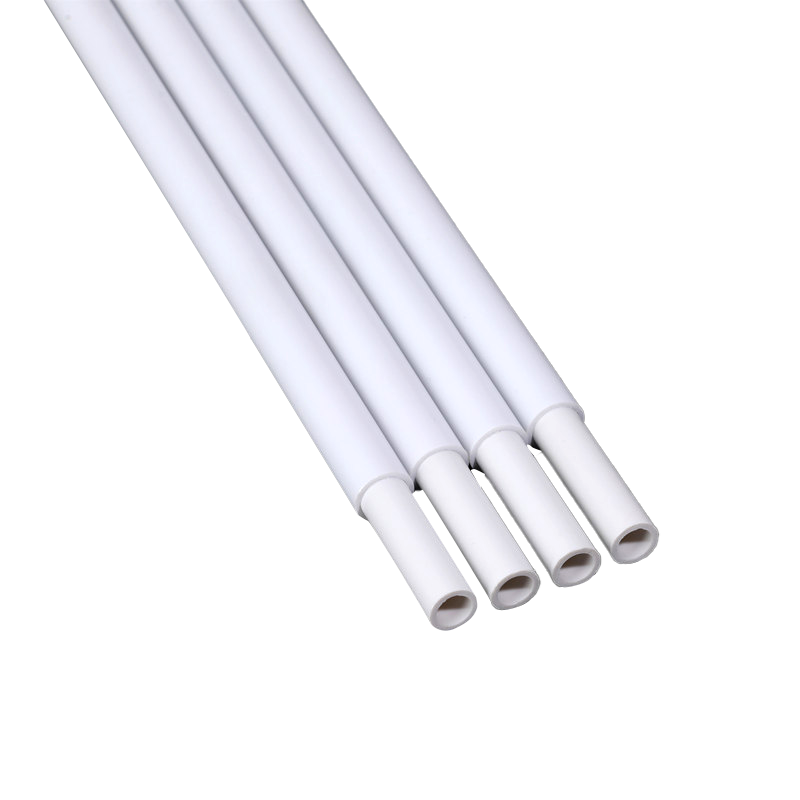Search by posts
Product category
Industry News
 By Admin
By Admin
What are the different types of PVC Profiles?
Polyvinyl chloride (PVC) profiles are extruded shapes made from rigid or flexible PVC, widely used in construction, automotive, electrical, and industrial applications. Their versatility, durability, resistance to weather and corrosion, and cost-effectiveness make them a preferred alternative to wood, metal, and other materials. PVC profiles are customized in shape, size, and composition depending on their intended use. Below is a detailed overview of the different types of PVC profiles and their applications.
1. Window and Door Profiles
One of the most common uses of PVC profiles is in the manufacturing of windows and doors. These are typically made from unplasticized PVC (uPVC), which is rigid and highly durable.
Single-Chamber Profiles: Basic profiles used for simple window frames. They offer moderate insulation and are cost-effective.
Multi-Chamber Profiles: Feature two or more internal chambers that enhance thermal and sound insulation. These are ideal for energy-efficient buildings.
Reinforced Profiles: Often include steel or aluminum inserts to increase structural strength, especially for large windows or doors exposed to high wind loads.
Glazing Bead Profiles: Used to secure glass panes in window frames. They are flexible and designed for easy installation and removal.
These profiles are widely used in residential and commercial buildings due to their low maintenance, excellent insulation, and resistance to moisture and rot.
2. Pipe and Conduit Profiles
PVC is extensively used in plumbing and electrical systems due to its chemical resistance and ease of installation.
Pressure Pipes: Used for water supply systems. Made from rigid PVC with high impact strength and pressure resistance.
Non-Pressure Pipes: Include drain, waste, and vent (DWV) pipes. These are lightweight and corrosion-resistant, making them ideal for sewage systems.
Electrical Conduit Profiles: Hollow PVC tubes used to protect electrical wiring in residential and industrial installations. They are flame-retardant and resistant to moisture and chemicals.
These profiles come in various diameters and wall thicknesses, conforming to international standards such as ASTM or ISO.
3. Flooring and Wall Cladding Profiles
PVC profiles are used in interior design for flooring, wall panels, and decorative trims.
Skirting and Baseboard Profiles: Used to cover the junction between walls and floors. They protect walls from damage and provide a clean finish.
Edge Trim and Corner Guards: Protect sharp edges and corners in high-traffic areas, especially in commercial spaces.
Wall Panel Profiles: Used as moisture-resistant wall coverings in bathrooms, kitchens, and hospitals.
Flooring Profiles: Include transition strips, thresholds, and stair nosings made from flexible or semi-rigid PVC for seamless floor transitions.
These profiles are often designed with aesthetic finishes like wood grain or metallic textures.
4. Automotive and Transportation Profiles
PVC profiles play a vital role in the automotive industry due to their flexibility, durability, and sealing properties.
Weatherstripping Profiles: Used around doors, windows, and trunks to prevent water, dust, and noise from entering the vehicle. These are usually made from flexible PVC or PVC blends.
Interior Trim Profiles: Decorative strips used on dashboards, door panels, and consoles.
Sealing and Gasket Profiles: Provide airtight and watertight seals in various vehicle compartments.
These profiles must withstand temperature fluctuations, UV exposure, and mechanical stress.
5. Medical and Laboratory Profiles
In healthcare settings, PVC profiles are used where hygiene, chemical resistance, and flexibility are essential.
Tubing and Catheter Profiles: Flexible PVC is used for medical tubing due to its biocompatibility and clarity.
Seals and Gaskets for Medical Devices: Ensure airtight enclosures in diagnostic and life-support equipment.
Cleanroom Seals: Used in laboratories and pharmaceutical facilities to maintain sterile environments.
These profiles often comply with strict regulatory standards such as USP Class VI or ISO 10993.
6. Industrial and Specialized Profiles
Custom PVC profiles are engineered for specific industrial applications.
Gaskets and Seals: Used in machinery, HVAC systems, and appliances to prevent leaks.
Guide Rails and Tracks: Used in conveyor systems, sliding doors, and automation equipment.
Insulation Sleeves: Protect wires and cables from abrasion and environmental damage.
Filter Housings and Enclosures: Provide durable, lightweight casings for filtration systems.
These profiles are often customized in shape and may include additives for flame retardancy, UV resistance, or anti-static properties.
7. Transparent and Decorative Profiles
Clear or colored PVC profiles are used where visibility or aesthetics are important.
Display and Signage Profiles: Used in light boxes, menu boards, and retail displays.
Aquarium and Terrarium Strips: Transparent seals and connectors for glass enclosures.
Decorative Molding: Used in furniture, cabinetry, and architectural detailing.
These profiles may be tinted, printed, or laminated for visual appeal.
PVC profiles are highly adaptable and available in a wide range of types tailored to specific industries and functions. From uPVC window frames to flexible automotive seals and medical tubing, the diversity of PVC profiles underscores their importance in modern manufacturing and construction. Choosing the right type depends on factors such as mechanical strength, environmental exposure, flexibility, and regulatory requirements. With ongoing advancements in material science, PVC profiles continue to evolve, offering improved performance, sustainability, and design possibilities.

Recommended products
-
2023 New Cheap Plastic Pipe Multiple Colors And Sizes Custom Hand Waving Flagpole
-
Wholesale Custom Pvc Material Indoor Desktop Flagpole Hand Waving Flagpole
-
Customizable Size Custom Logo Plastics Hand Waving Flagpole Big Pvc Flagpole
-
Plastics Hand Waving Flagpole Factory Direct Custom Wholesale PVC Flagpole Parts Pipe
-
Custom Easy Install Safety Flagpole Pvc China Factory Hand Waving Flagpole
-
New Popular Product Transparent Pvc Flagpole Custom Size Hand Waving Flagpole
-
2023 High Quality Hand Waving Flagpole Big Or Small Flagpole Size Custom
-
Fast Delivery Promotion Factory Wholesale Flagpole Pvc Pipe Hand Waving Flagpole
-
2023 Personalized Custom Desk Hand Waving Flagpole Outdoor White Flagpole
-
Wholesale 2023 Hot Sale Used Flagpole Weight Custom Pvc Hand Waving Flagpole
-
Wholesale Products Cheap High Quality Hand Waving Flagpole Newest Sections Flagpole
-
Wholesale Cheap High-Quality Hot Sale Flagpole Cylindrical Hand Waving Flagpole

 +86-0573-88528475
+86-0573-88528475 English
English русский
русский












